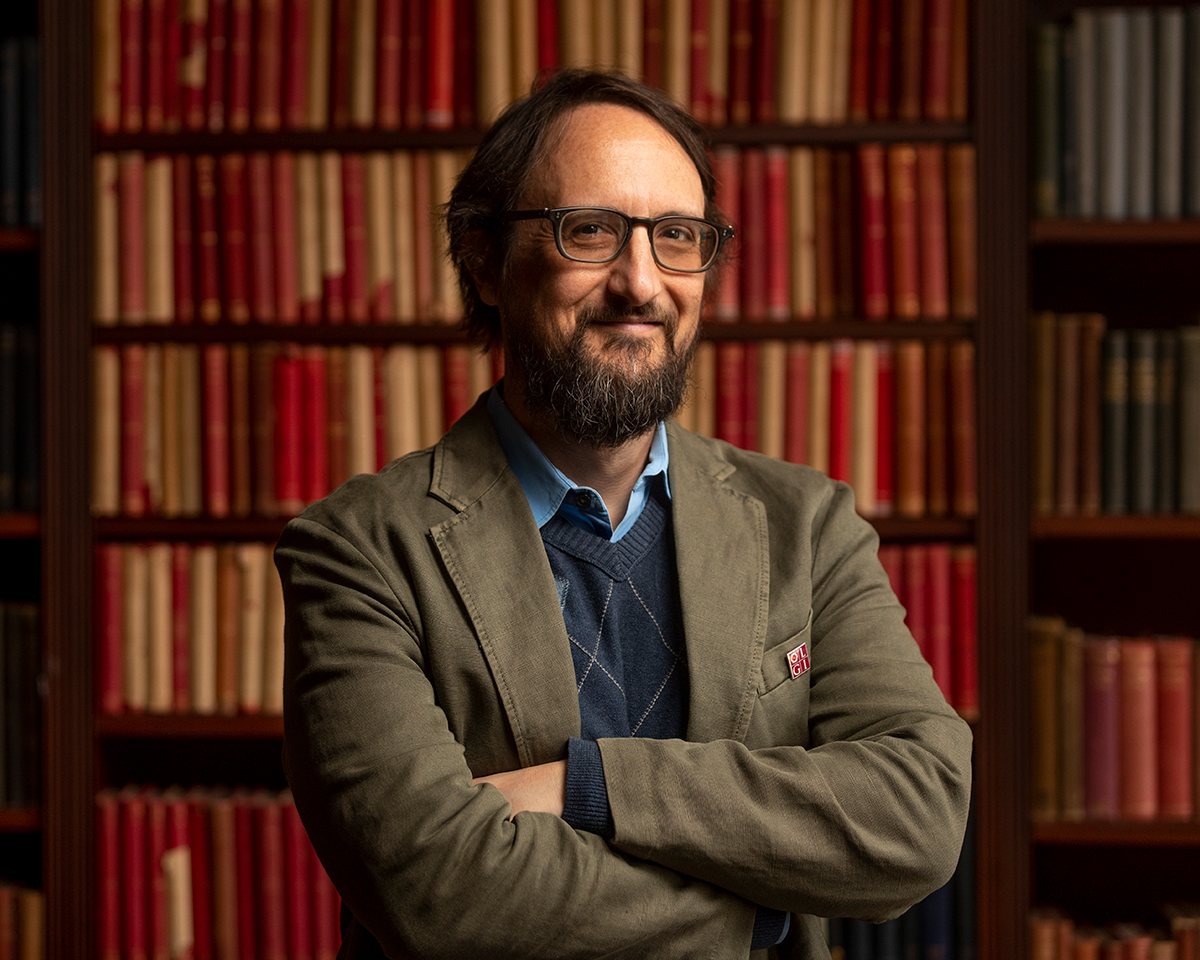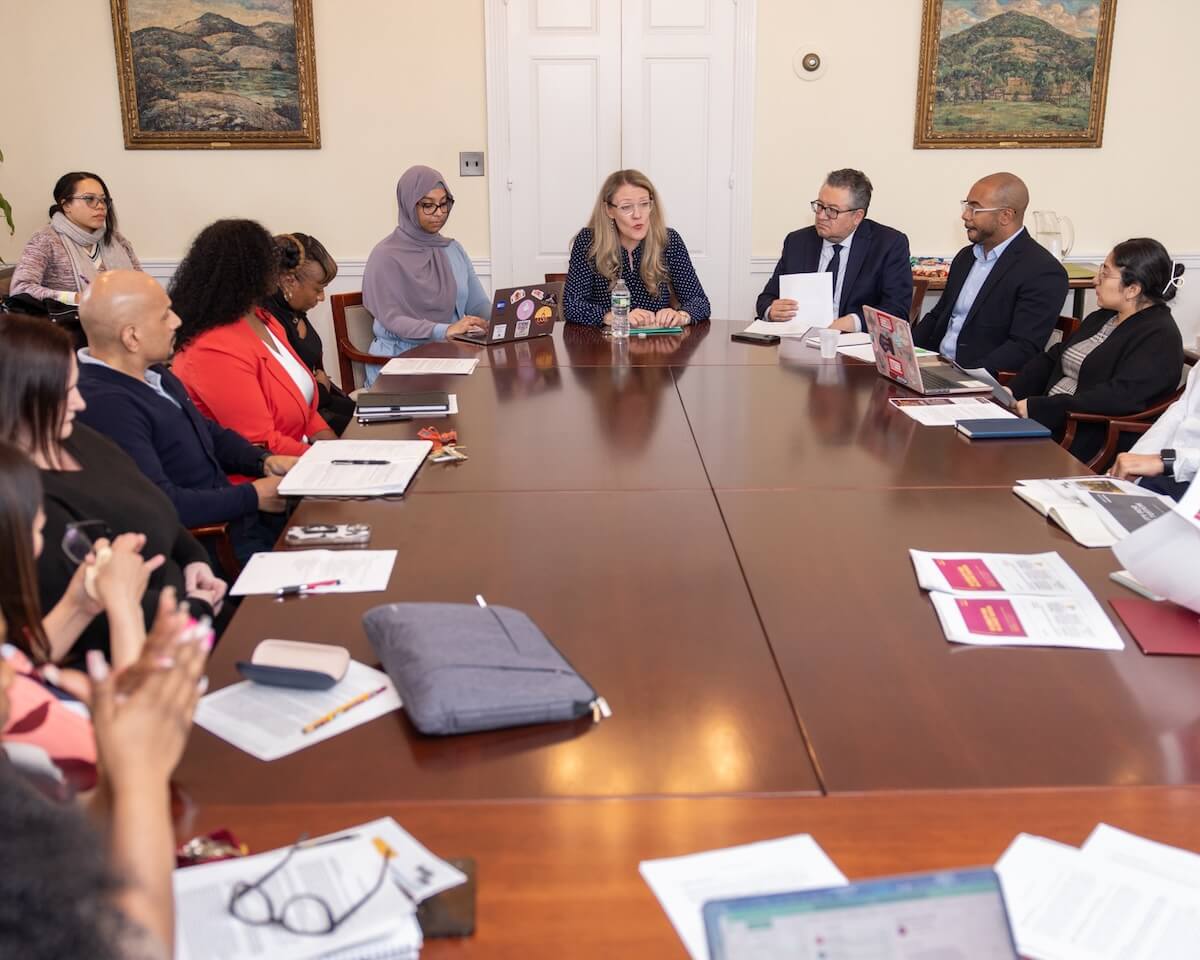As they prepare for the next stages of their lives, members of the Brooklyn College Class of 2018 share their thoughts on some of the more complex and challenging aspects of their areas of study. For more on this year’s commencement, visit our Facebook, Instagram, and Twitter pages. Use the #BCGrad2018 hashtag to join the conversation.
Margaret Iuni is the valedictorian of the Brooklyn College Class of 2018.
She was born and raised in the Bensonhurst section of Brooklyn surrounded by a large family of Irish and Italian heritage. Before coming to Brooklyn College, she attended Bishop Kearney High School where she took classes through St. Joseph’s College.
A William E. Macaulay Honors College student, Iuni majored in English education for grades 7–12 and minored in history with a focus on New York City studies. She chose Brooklyn College because of its affordability, diversity, and outstanding reputation in education and the humanities. She has a 4.00 grade point average and has made the Dean’s List every semester she has attended Brooklyn College.
Iuni is a very active scholar. She interned for Professor Roni Natov in the English Majors’ Counseling Office, where she advised students on program requirements and helped publish the Department of English student magazine, The Junction. She also contributed to the office’s blog. She was president of the Macaulay Creative Writing Club and a member of Brooklyn College’s Eta Theta Chapter of Kappa Delta Pi, the international honor society for education. She was the recipient of the 2017 Herb Berman Memorial Scholarship for academic merit and civic service, the 2017 Special Merit Award for Outstanding Contribution to the English Department, and served as the Lisa Goldberg/Revson Scholar in 2016 for her service to New York City. She indicates that Brooklyn College faculty have been essential to her success, noting that Professor Natov, Professor Priya Parmar, and Adjunct Professors Sivan Butler-Rotholz and Janice Pumelia have profoundly affected her life both academically and personally.
In classic Brooklyn College spirit, Iuni has dedicated her life to the education, advancement, and empowerment of younger generations. She is a student teacher at Brooklyn Collegiate Preparatory High School, and assistant coach and team judge of the forensics (speech and debate) team at Xaverian High School. Previously, she was a summer supplemental music history instructor and English tutor for the Brooklyn College Percy Ellis Sutton SEEK Program, assistant teacher at the Buckley School of Irish Dance, and a peer mentor for her fellow students at Brooklyn College. She serves as a research assistant on Professor Parmar’s upcoming publication focused on dismantling the school to prison pipeline through hip-hop pedagogy. Iuni’s civic engagement extends to the nonprofit sector; in 2014, she founded the Brooklyn College Relay for Life Club to raise money for the American Cancer Society. Just recently, she received a Mayoral Service Award from the City of New York for outstanding volunteer efforts.
Next year, she plans to attend New York University’s Graduate School of Arts and Science Program for English and Comparative Literature, with the goal of becoming a full-time high school teacher. She hopes to continue to guide young adults toward a more empathetic and tolerant worldview through literary studies and mentor students in need of academic guidance.
In that vein, Iuni was asked her thoughts on solutions to some of the biggest problems young people receiving a public education face as it relates to equity and resources. This is what she had to say.
“With the caveat that there are scholars and policymakers who have researched this topic extensively and are much better equipped to address the multifaceted problem of inequity in the public education system than I am, I believe that incorporating critical pedagogy in a classroom would be a great place to begin. Critical pedagogues aim to provide a democratic, relevant, and experience-inclusive education to all students despite differences in race, ethnicity, sex, gender, sexual identity, socioeconomic status, language, ability, age, class, or any other element of a student’s identity. It extends beyond the formal curriculum and empowers all students to develop strong individual and group identities by questioning hegemonic (social hierarchical) powers within cultures and subcultures that are relevant to them. Incorporating critical theory and multiple literacies in a high school English classroom may at first seem like a difficult task because many schools still subscribe to the literary canon of books written by typically white Western men. However, by incorporating students’ experiences and cultures, and by diversifying course materials, students can contextualize and engage with traditional texts more effectively, while becoming empowered to question and incite change.
My experiences as a student of an English secondary education program have framed my desire to place the field of literature in dialogue with student experiences as a way to examine the human condition without excluding narratives curated for younger audiences. I believe the introduction of the intersection of literary studies and youth studies in my own classroom could spark the formation of political, social, and economic thought in young readers. Critically reading literature is vital to the creation of well-rounded, well-adjusted global citizens. In a diverse city such as New York, wherein dozens of cultures collide on a daily basis, it simply does not make sense to perpetuate a single-culture environment. The study of literature within the context of students’ experiences can pedagogically shape attitudes towards students’ own identities as well as to those that are different from theirs. I am a firm believer that valuing students’ experiences from all backgrounds and instilling a culture of respect within a classroom can help positively shape students’ lives and those whom they come in contact with. I have personally witnessed the positive effects that critical reading can have on the lives of students whose cultures are often forgotten or have been actively removed from the curriculum and who hide parts of themselves to ‘fit in.'”


